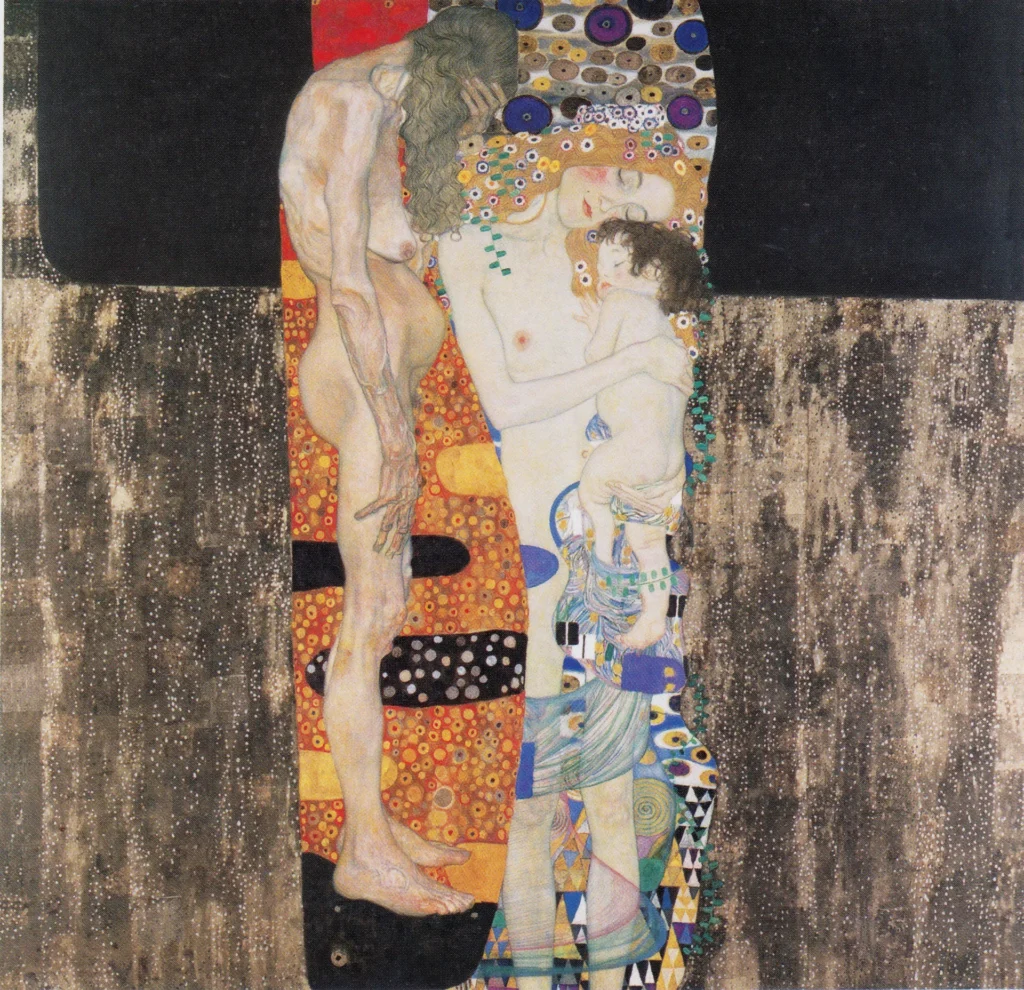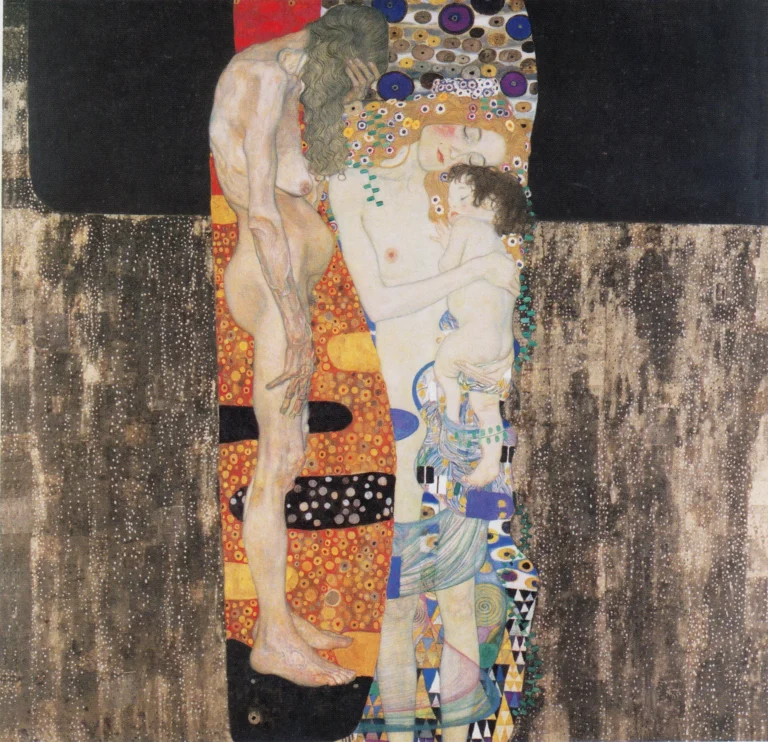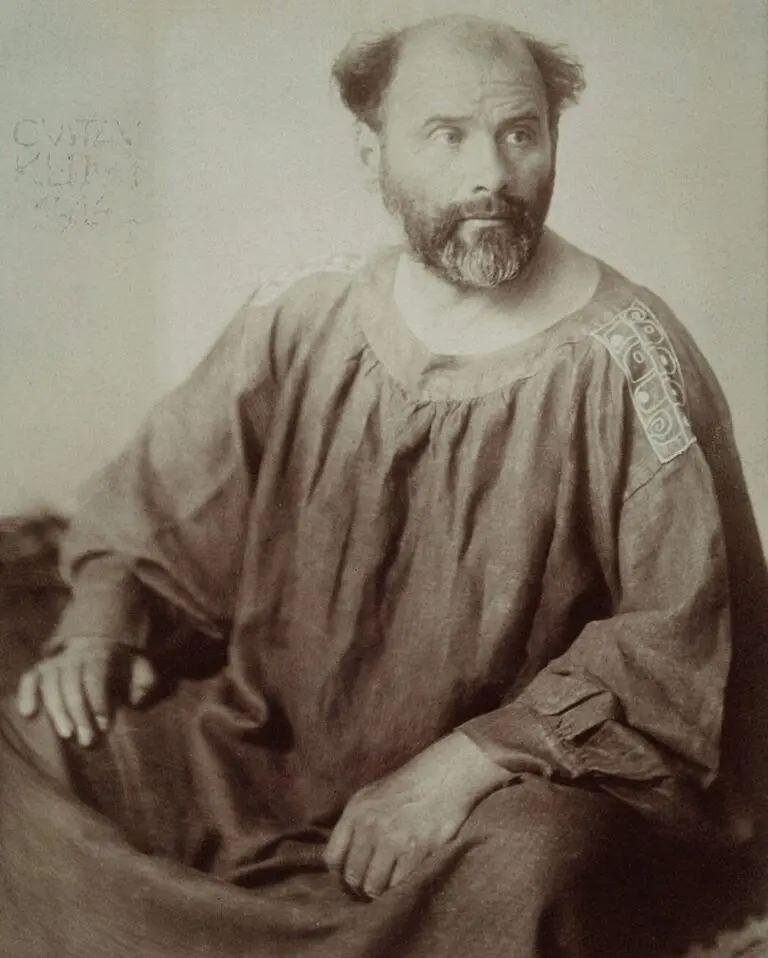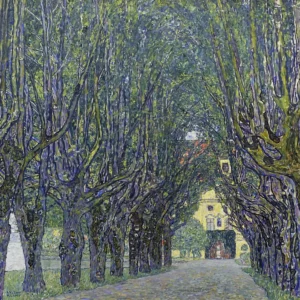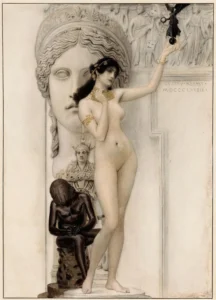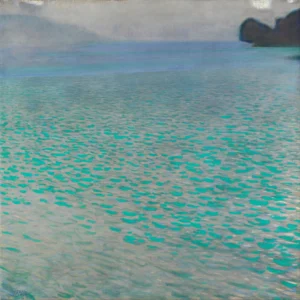The Three Ages of the Woman (1905)
Created in 1905, Gustav Klimt's 'The Three Ages of Woman' masterfully captures the essence of life with vivid portrayals of women at three different life stages. It features an elderly woman embodying decay, a mature mother cradling a baby, and a serene youth representing vitality. The work's rich use of gold leaf and intricate patterns reflects Klimt's unique style and thematic depth within both Art Nouveau and Symbolism. The contrast between beauty and decay offers profound commentary on the female experience.
Year 1905
About the Artwork
Did You Know
Liked what you see? Add it to your collection.
Enjoyed reading? Share it.
... continued
Composition and Figures
The painting depicts three women at different stages of life, symbolizing the cycle of human existence. On the left, an elderly woman is portrayed with a bowed head, pale complexion, and clear signs of physical decay, such as sagging skin, bulging veins, and a bloated belly. Her posture and expression convey a sense of resignation, melancholy, and grief over the passage of time.
Symbolism and Decorative Elements
The painting is characterized by Klimt's masterful use of gold leaf, intricate patterns, and symbolic motifs. The elaborate garments and the background are adorned with ornamental details that enhance the sensuality and richness of the work. The use of contrasting auras – a cool, blue aura for the younger figures and a warm, earthy tone for the elderly woman – underscores the themes of life's transient stages and the timeless nature of beauty and art.
Artistic Style and Technique
'The Three Ages of Woman' falls within Klimt's 'Golden Period,' marked by high ornamentation and the use of gold and metallic paints. The painting employs an impasto technique, with Klimt mixing drying solvents into the paint to avoid a glossy appearance. This period was heavily influenced by Byzantine mosaics, which Klimt encountered during his travels.
Exhibitions and Reception
The painting was first exhibited at the second exhibition of the Deutscher Künstlerbund in Berlin in 1905 and later at the Venice Biennale in 1910, where it received significant acclaim. It was purchased for the International Exhibition in Rome in 1911 and is now housed at the Galleria Nazionale d'Arte Moderna e Contemporanea in Rome.
Interpretation and Influence
The work is often interpreted as an allegory of life, death, and the passage of time, reflecting Klimt's personal interpretation of the Eros and Thanatos concept. The contrast between the young mother's serenity and the old woman's despair highlights the conflict between life's beauty and its inevitable decline. The painting also touches on themes of femininity, aging, and the societal invisibility of older women.




